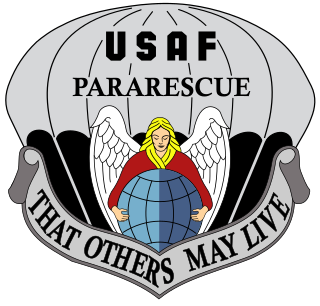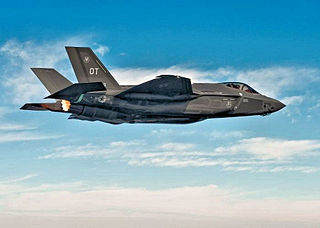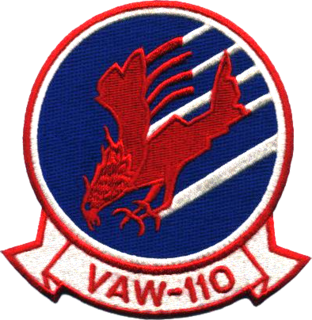This page is based on this
Wikipedia article Text is available under the
CC BY-SA 4.0 license; additional terms may apply.
Images, videos and audio are available under their respective licenses.

A flight surgeon is a military medical officer practicing in the clinical field of aviation medicine. Although the term "flight surgery" is considered improper by purists, it may occasionally be encountered.

A trainer is a class of aircraft designed specifically to facilitate flight training of pilots and aircrews. The use of a dedicated trainer aircraft with additional safety features—such as tandem flight controls, forgiving flight characteristics and a simplified cockpit arrangement—allows pilots-in-training to safely advance their real-time piloting, navigation and warfighting skills without the danger of overextending their abilities alone in a fully featured aircraft.

The Critical Incident Response Group (CIRG) is a division of the Criminal, Cyber, Response, and Services Branch of the United States Federal Bureau of Investigation. CIRG enables the FBI to rapidly respond to, and effectively manage, special crisis incidents in the United States.
Shock troops or assault troops are formations created to lead an attack. They are often better trained and equipped than other infantry, and expected to take heavy casualties even in successful operations.

In the field of military theory, the operational level of war represents the level of command that connects the details of tactics with the goals of strategy.

Sissi is a Finnish term for light infantry which conducts reconnaissance, sabotage and guerrilla warfare operations behind enemy lines. The word sissi, first attested in the modern meaning "patrolman, partisan, spy" in 1787, comes to Finnish from Slavic and refers either to a forest bandit or his yew bow.

Pararescuemen are United States Air Force Special Operations Command (AFSOC) and Air Combat Command (ACC) operators tasked with recovery and medical treatment of personnel in humanitarian and combat environments. These special operations units are also used to support NASA missions and have been used to recover astronauts after water landings. They are attached to other SOF teams from all branches to conduct other operations as appropriate. Of the roughly 200 Air Force Cross recipients, only 24 are enlisted rank, of which 12 are Pararescuemen. Part of the little-known Air Force Special Operations community and long an enlisted preserve, the Pararescue service expanded to include Combat Rescue Officers early in the 21st century.

The Naval Aviation Warfighting Development Center was formerly known as the Naval Strike and Air Warfare Center at Naval Air Station Fallon located in the city of Fallon in western Nevada. It is the center of excellence for naval aviation training and tactics development. NAWDC provides service to aircrews, squadrons and air wings throughout the United States Navy through flight training, academic instructional classes, and direct operational and intelligence support. The name was changed from NSAWC to NAWDC to align with the naming convention of the Navy's other Warfare Development Centers (including Naval Surface and Mine Warfare Development Center SMWDC and the Undersea Warfare Development Center UWDC
No 278 Squadron formed on 1 July 2003. The squadron's formation removes day-to-day management responsibility of No. 78 Wing RAAF Technical Training and Operational Flight Trainer support elements from the Wing Headquarters.

Marine Medium Tiltrotor Training Squadron 204 (VMMT-204) is the MV-22 Osprey training squadron of the United States Marine Corps. Known as the "Raptors", the squadron was originally designated Marine Medium Helicopter Training Squadron 204 (HMT-204) to train new MV-22 pilots and was officially redesignated as VMMT-204 on June 10, 1999. They fall under the command of Marine Aircraft Group 26 (MAG-26) and the 2nd Marine Aircraft Wing.
Weapons Systems Trainer (WST) is a training device (simulator) designed particularly for weapons training. A term commonly used by the United States Department of Defense, particularly for aircraft simulators.

Airborne Mine Countermeasures Weapon Systems Training School (AWSTS) was a United States Navy helicopter training squadron stationed at Naval Station Norfolk, Virginia. AWSTS trained newly commissioned Naval Aviators, conversion pilots, refresher pilots, and enlisted aircrew on the MH-53E Sea Dragon and was a part of

403 "City of Calgary" (Helicopter) Operational Training Squadron is a squadron of the Royal Canadian Air Force (RCAF) located at Canadian Forces Base Gagetown. It is equipped with CH-146 Griffons and provides operational aircrew training to the crews who will fly the helicopter. The squadron also conducts operational test and evaluation, develops aviation tactics and carries out operations in support of the 1 Wing mission. It also supports the local Army requirements of the Combat Training Centre. It was founded as No. 403 Squadron RCAF.

The Marine Corps Training and Education Command (TECOM) is the primary training command of the United States Marine Corps

Helicopter Sea Combat Squadron THREE , also known as the "Merlins", is a United States Navy multi-role combat helicopter squadron based at Naval Air Station North Island in San Diego, California which operates the Sikorsky MH-60S Knighthawk helicopter to train aircrew and support fleet development on the MH-60S for the Commander Helicopter Sea Combat Wing, U.S. Pacific Fleet. The squadron was established on 1 September 1967 at Naval Air Station Imperial Beach with the Boeing Vertol CH-46 Sea Knight to provide vertical replenishment (VERTREP) services on the West Coast, and was redesignated HSC-3 on 1 April 2005.

The 422d Test and Evaluation Squadron is a United States Air Force unit. It is assigned to the 53d Test and Evaluation Group, stationed at Nellis Air Force Base, Nevada. The squadron performs operational testing of all fighter aircraft and munitions entering and in operational use by Air Combat Command.

Carrier Airborne Early Warning Squadron 110 (VAW-110), nicknamed the "Firebirds", was an aviation unit of the United States Navy based at NAS Miramar.The Firebirds were a training squadron for the E-2 Hawkeyes. It was disestablished in September 1994.
Patrol Squadron Thirty (VP-30), the “Pro’s Nest,” is the United States Navy’s Maritime Patrol and Reconnaissance Fleet Replacement Squadron (FRS) and was originally established on June 30, 1960..














